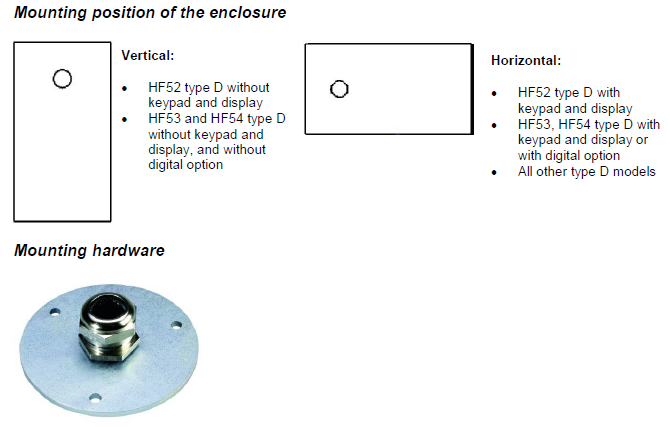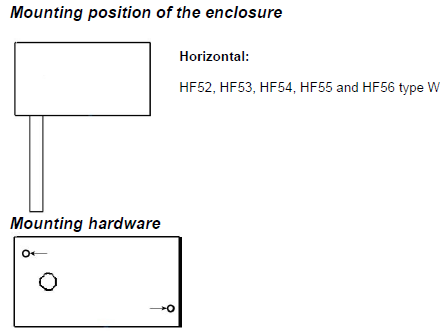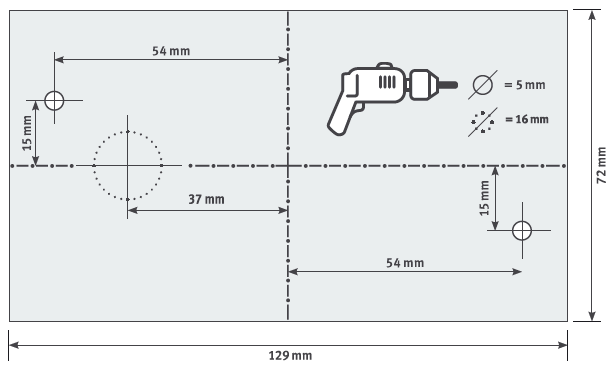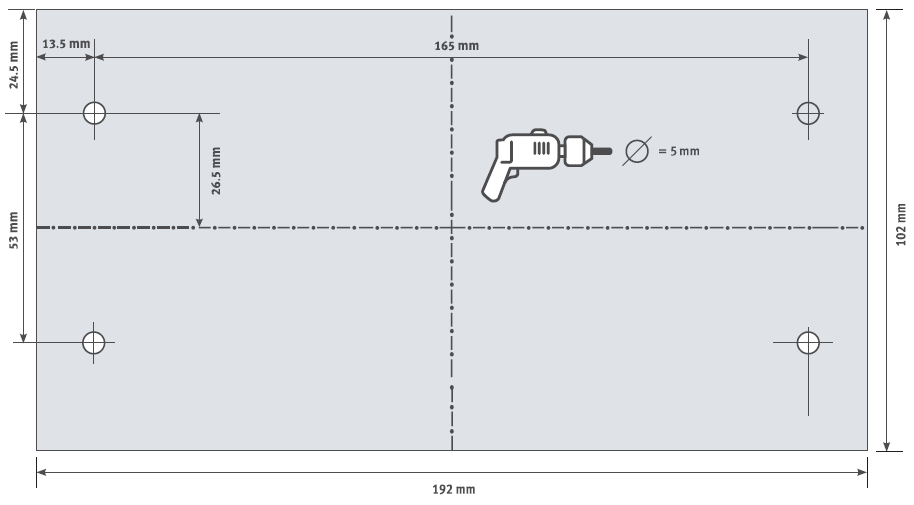General guidelines
Relative humidity is extremely dependent on temperature. Proper measurement of relative humidity requires that the probe and its sensors be at exactly the temperature of the environment to be measured. Because of this, the location where you choose to install the probe can have a significant effect on the performance of the instrument. The following guidelines should guarantee good instrument performance:
Select a representative location: install the probe where humidity, temperature and pressure conditions are representative of the environment to be measured.
Provide good air movement at the probe: air velocity of at least 200 ft/ minute (1 meter/second) facilitates adaptation of the probe to changing temperature.
Avoid the following: (1) Close proximity of the probe to a heating element, a cooling coil, a cold or hot wall, direct exposure to sun rays, etc. (2) Close proximity of the probe to a steam injector, humidifier, direct exposure to precipitation, etc. (3) Unstable pressure conditions resulting from excessive air turbulence.
Immerse as much of the probe as possible in the environment to be measured.
Prevent the accumulation of condensation water at the level of the sensor leads: Install the probe so that the probe tip is looking downward. If this is not possible, install the probe horizontally.
HF5 enclosure
The HF5 enclosure consists of a base and a cover held together with 4 screws. To open the enclosure, use a metric 2.5 mm or 3 mm hex key. Prior to re-assembling the enclosure, verify that the red seal is sitting properly in its groove on the base.Installation of the HF5 type D (through wall mount)

The QMA-15 consists of a flange and compression fitting and is designed to hold the probe of the HF5 type D when mounted through a wall. The HF5 does not require any additional support.
Installation of the HF5 type W (surface mount)
Method 1
The HF5 is supplied with 2 screws, 2 drywall anchors and two rubber washers. The base of the enclosure has 2 screw-wells (see drawing) that are normally closed at the bottom. Use the template provided with the HF5 to drill mounting holes in the wall and insert the drywall anchors. Place a rubber washer on each screw. Insert a screw in each well and push to open the bottom of the well.

Method 2
When a DIN-rail (35 mm / 1 3/8 “) is available use part AC5002 (not included). This is a DIN-rail mounting kit consisting of 2 clamps that attach to the back of the enclosure with the screws provided.

Mounting dimensions HF52/HF53/HF54

Mounting dimensions HF56

Mounting dimensions HF53/HF54 (Alu Housing)
